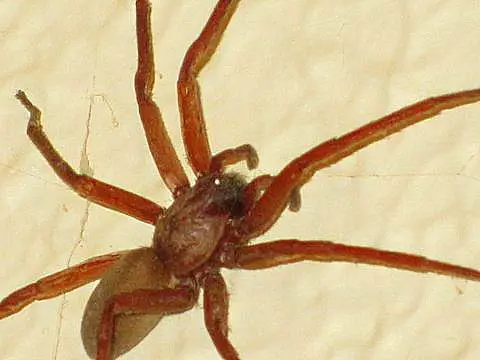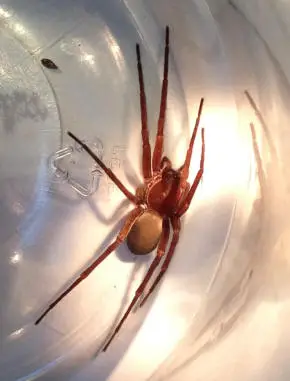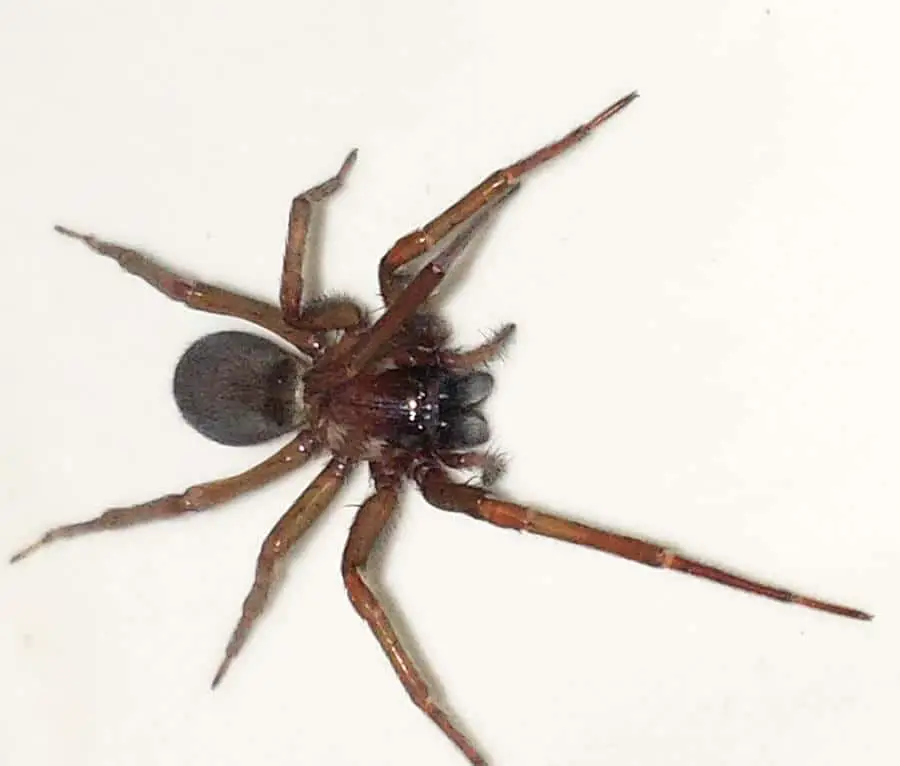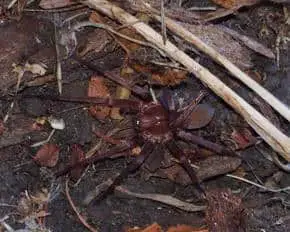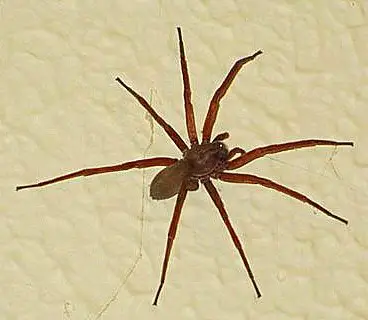The Tengellid spiders (family Tengellidae) include eight genera and a little over 30 species worldwide. The family is confined to the New World, with two monotypic genera occurring in Madagascar and New Zealand, respectively. Like most spiders, they have eight eyes. The characters defining the family are technical and there are still some disagreements as to its size and placement within spider classification. According to Griswold (1993), the family is polyphyletic. This is another of the families removed from the catchall family Clubionidae over the last 20 or so years.
Tengellids are relatively large spiders with long and relatively stout legs; their key shared characters are difficult to see without a microscope (Bradley 2013). They are ground-dwelling spiders that hide under rocks and debris during the day, emerging to wander and hunt at night. They are found largely in forests, living around rock outcrops and in thick leaf litter, but are often found in caves as well. Specimens have been collected wandering on the ground at night, under rocks, and especially in pitfall traps. Egg sacs may be attached to the substrate and guarded by the female (Lauricius) or suspended from a thread (Titiotus).
All photos are copyright to their owners and may not be reproduced without permission.

